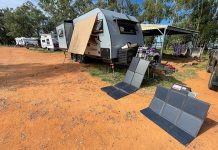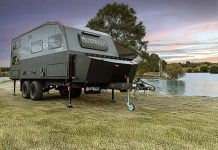Hitch up a van and a couple of things happen. One, the anticipation of the journey ahead will build. And two, a transfer of weight occurs – the weight previously resting on the jockey wheel is now being supported by the tow vehicle (the ball weight).
EASY TO OVERLOAD
As you (hopefully) know, every tow vehicle has a maximum towball mass that is mandated by the vehicle’s manufacturer. You would also know that it is illegal to overload the towbar.
But how easy is it to inadvertently overload the towball? In this article, we will look at how the position of the water tanks on a van impacts that van’s ball weight and, by extension, the legality of your towing setup.
On a tandem axle van, it’s very common to find two water tanks mounted forward of the axles. These tanks differ in size but usually they’ll offer about 100L of water storage capacity each.
Picture this: your 4WD has a maximum towball mass of 300kg. You’ve just purchased a van with an unladen ball weight of 155g. However, in your excitement, you didn’t consider what the loaded ball weight of the van would be, and by ‘loaded’, I mean with those two 100L water tanks that the manufacturer had fitted in front of the tandem axle set filled to the brim.
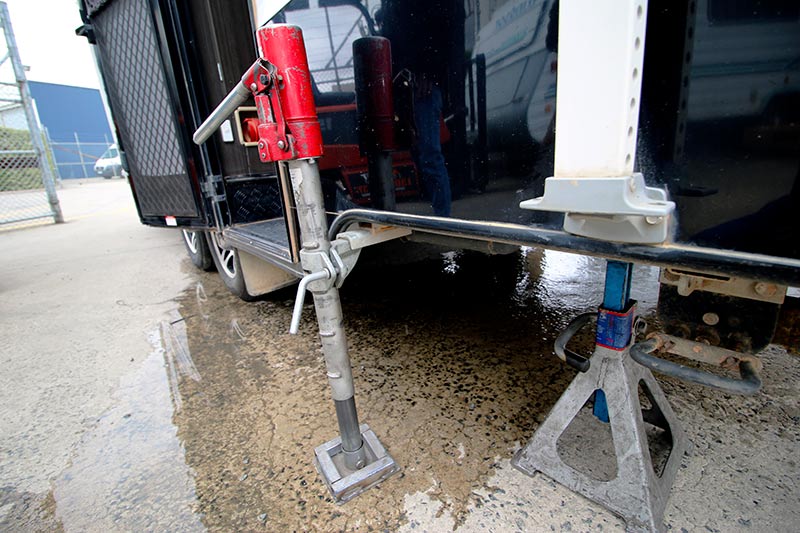
To find out the extent to which filled water tanks can impact ball weight, I enlisted the help of Andrew Phillips of the RV Repair Centre in Bayswater North, Victoria. We found a suitable secondhand van in his yard, grabbed his digital ball weight scale, and got to work.
SURPRISING BALL WEIGHT INCREASE
This van had two 100L water tanks positioned right where I wanted them. To ensure both tanks were absolutely empty, we jacked up the nearside of the van – it was surprising how much extra water gushed out of the offside tap.
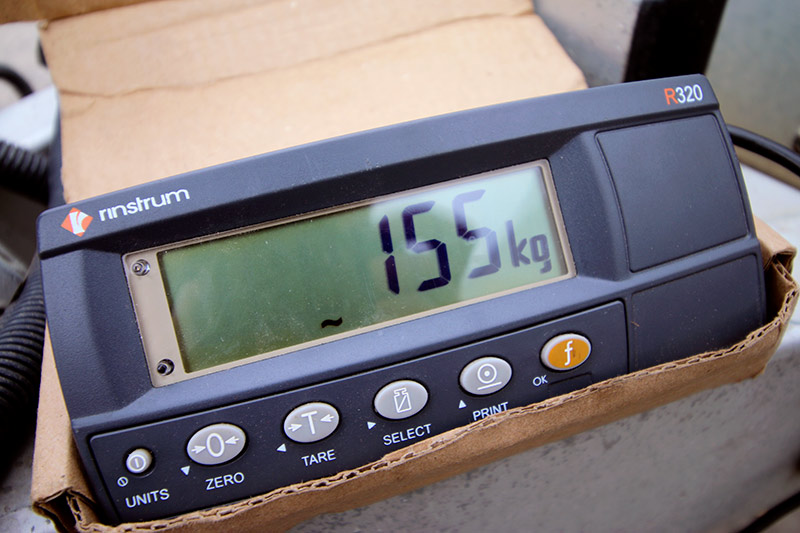
The scale revealed a ball weight of 155kg. On the face of it, for a tandem-axle van, that seemed reasonable. Time to fill the two water tanks.
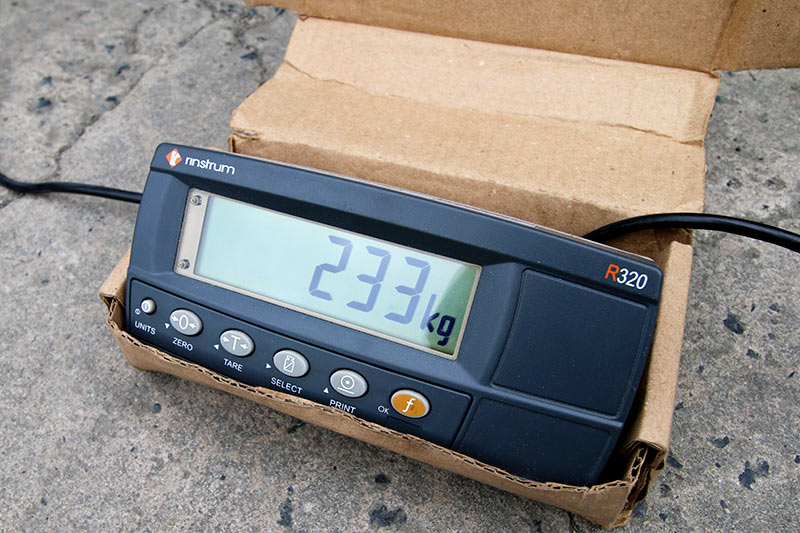
When we sure both tanks were completely full, we remeasured the ball weight, using the same digital scale. The result was illuminating – the scale showed 233kg. By adding 200kg worth of water to the van, as the manufacturer intended, we had increased the ball weight by 78kg.
JERRY CANS
The picture, though, gets potentially worse. Our test van was fitted with holders to keep two 20L jerry cans on the A-frame. You probably wouldn’t think twice about filling your jerries, hitching up and hitting the road. But perhaps you should.
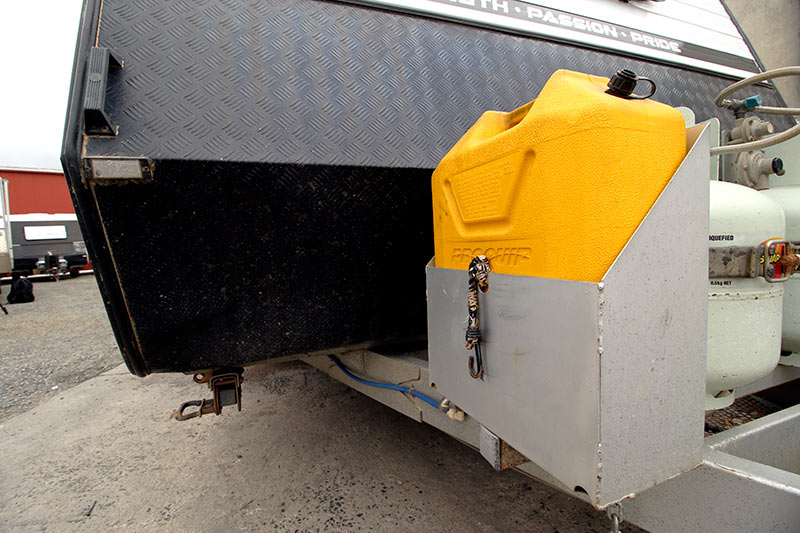
With a full jerry can in place, we took a reading of the ball weight and saw an increase of 12kg. So we can safely assume two full jerry cans, in this instance, would add 24kg to the ball weight. Add that to the 78kg and, in fluids alone, we had increased the caravan’s ball weight by 102kg.
EVERY RV IS DIFFERENT
Now, it’s important to note that every RV setup is different. How full water tanks affect ball weight depends on many variables, from the position of the axles on the chassis to the length of the van and the size and position of the tanks in relation to the axles.
Our test van was quite ‘typical’, however, reminiscent of many standard vans being sold today. So let’s apply it to a real-world scenario. Assume an automatic Toyota Prado, with a 3000kg towing capacity and a 300kg maximum towball download. At first glance, you might assume it to be a perfectly reasonable tow vehicle for this van.
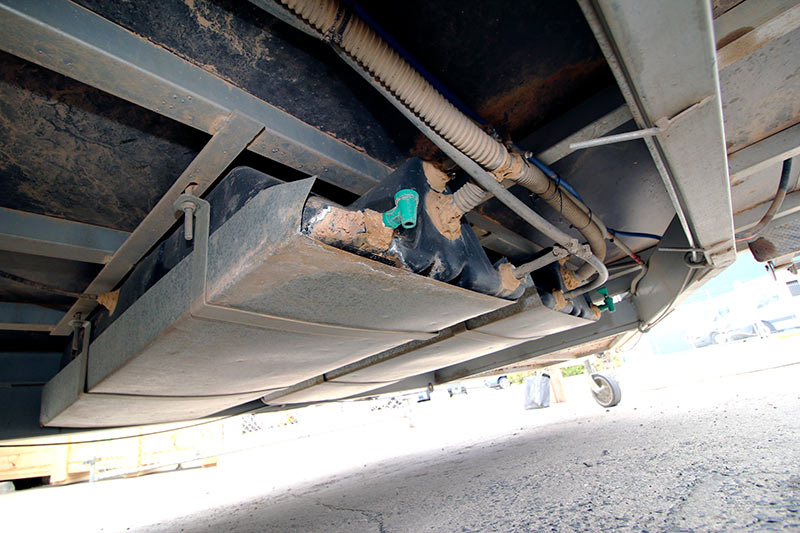
But with both tanks full and both jerry can holders loaded up, we’re left with 43kg to accommodate other items, and we haven’t even talked about the gas in the two 9kg gas cylinders that were mounted on the drawbar. Forget about mounting a bike rack and a couple of bikes to the A-frame.
(A solution, of course, would be to travel with only one tank full, but that defeats the purpose of having dual tanks.)
SINGLE-AXLE VANS
For one simply reason, most single-axle vans don’t suffer from this watery worry. Peer underneath a van with one axle and you will probably find the water tank positioned immediately forward of the axle. If it has two tanks, the second tank will probably be secured immediately aft of the axle.
This is the case with my personal van. And so I tested how filling first the front tank, and then the rear tank, affected the ball weight.
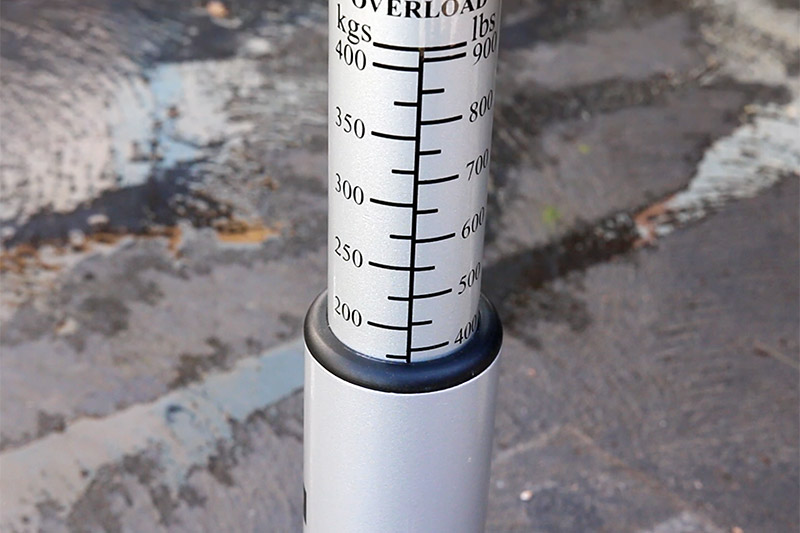
The results were… anticlimactic. With the tanks empty, my Milenco scale showed a ball weight of approximately 160kg (it’s not a digital scale).
Filling the 60L tank forward of the axle yielded the same measurement, as did then filling the tank rear of the axle, give or take a couple of kilograms (which barely registered on the scale anyway).
SUMMING UP
Don’t take our figures for gospel. As stated, there are numerous variables when it comes to ball weight. Our aim was to show how the simple act of filling a van’s water tanks, as intended by the van’s manufacturer, will affect ball weight, and even potentially bring it uncomfortably close to the vehicle’s towball maximum.
So get out your portable ball weight scale, or run it past the weigh bridge – we think you’ll be surprised by the result.



